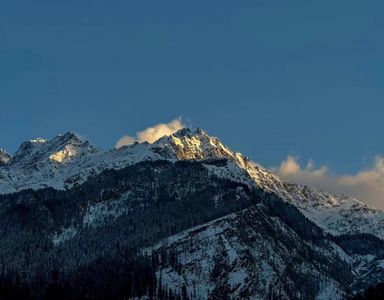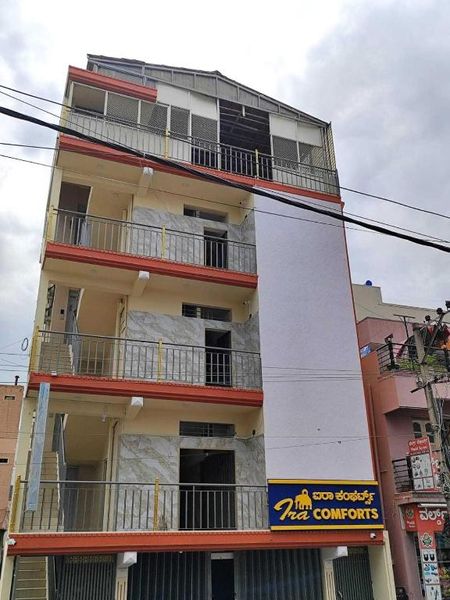Ultimate Guide to Kuari Pass Weather and Temperature Before You Trek
 Deepanshu Travel
18 Jul, 2025
11 mins read
62
Deepanshu Travel
18 Jul, 2025
11 mins read
62

Kuari Pass weather and temperature is a key concern for anyone planning a trek to this beautiful Himalayan region. Located in the Garhwal Himalayas of India, Kuari Pass sits at an elevation of around 12,516 feet. The weather and temperature here can change quickly. Knowing what to expect will help you prepare for a safe and enjoyable journey.
The Weather and temperature of Kuari Pass
Kuari Pass weather and temperature vary depending on the time of year. In general, there are three main trekking seasons: spring, summer, and autumn. Snow can also shape the conditions during the winter months, though fewer trekkers visit then.
The Kuari Pass trek offers stunning views of Himalayan peaks and is ideal for both beginners and experienced trekkers.
Spring Season (March to May)
During spring, Kuari Pass weather and temperature begin to warm up. Daytime temperatures can reach around 15 °C to 20 °C. Nighttime temperatures may drop to 0 °C or a little below. Snow from winter starts to melt, making trails accessible but the high parts may still have patches of snow. The weather is usually stable, but you should be ready for sudden showers.
Summer Season (June to August)
In summer, the region receives monsoon rain from June through August. Kuari Pass weather and temperature during this time stays cooler than the plains. Day temperatures range from 10 °C to 15 °C. Nights can go down to 2 °C. Frequent showers can cause slippery trails. Views may be cloudy but you can still witness the lush green forests and streams.
Autumn Season (September to November)
When autumn arrives, Kuari Pass weather and temperature become ideal for trekking. Day temperatures range between 12 °C and 18 °C. Nights can be cold, often dropping to around 3 °C or 4 °C. The skies clear and visibility improves. This is the best season for panoramic views of snow capped peaks. Weather is often stable but cold winds may blow at high altitudes.
Winter Season (December to February)
In winter, Kuari Pass weather and temperature can be harsh. Daytime highs rarely go above 5 °C. Nighttime lows drop to negative 10 °C or lower. Heavy snowfall can close the pass completely. Only experienced mountaineers attempt winter treks, and they need proper gear.
Hourly and Daily Temperature Ranges
When planning a trek, knowing the average daily high and low temperatures can help you pack wisely.
- Daytime highs are mild in spring and autumn but cold in summer and winter.
- Nighttime lows are close to freezing in spring and summer. In autumn, they go below freezing at times. In winter the temperatures fall sharply.
Example seasonal ranges:
- Spring: Day 15 °C to 20 °C. Night 0 °C to –2 °C.
- Summer: Day 10 °C to 15 °C. Night 2 °C to –1 °C.
- Autumn: Day 12 °C to 18 °C. Night 3 °C to –3 °C.
- Winter: Day 0 °C to 5 °C. Night –5 °C to –12 °C.
How Weather Changes on the Trail
Weather in mountain regions like Kuari Pass can change quickly. Even in spring and autumn, skies can go from clear to cloudy with rain or snow in hours. Temperatures can fall 5 °C to 10 °C within a few hours. Wind can also increase the chill factor. Be ready for these changes and follow forecasts daily.
Importance of Carrying Proper Gear
Because of variable Kuari Pass weather and temperature, gear is important. Here is what you need:
- Layers of clothing: thermal inner layer, fleece, windproof outer layer.
- Warm hat, gloves, and socks.
- Waterproof jacket and rain cover.
- Trekking boots that are waterproof and have good grip.
- Sun protection: sunblock, sunglasses, and a hat.
Carry dry bags to protect your gear from rain or snow. Bring extra socks and gloves in case wet conditions arise. It is easier to stay warm if your feet stay dry.
Weather Forecast Tips
Check local weather updates just before your trek. Use multiple sources like mountain weather apps and local weather stations. A few days of clear weather ahead are ideal. But be ready to change your schedule if storms are expected.
For example spring and autumn treks are best when there is a stable forecast. Summer treks can be disrupted by monsoon showers. Winter treks need long term snow and avalanche warnings.
Adjusting to Altitude and Temperature
High altitude affects how you feel temperature. Thin air means heat escapes faster. You may feel colder at the same temperature than at lower elevations. Humidity can also make it feel colder. On the other hand, midday sun at 12,000 feet can feel warm.
Stay hydrated. Dehydration can increase sensitivity to cold. Keep moving during rest breaks. Cold muscles cramp easily and are more prone to injury.
What to Do If the Weather Turns Bad
If Kuari Pass weather and temperature turn bad, you should have backup plans:
- Trek only as far as safe, then return to lower altitude.
- Stay in mountain huts or camps that offer shelter.
- Use cooking tents or communal areas for warmth.
- Keep warm liquids and eat high energy foods.
Avoid taking risks during rain or snow. Slippery surfaces and low visibility increase accidents.
Season by Season Summary
Spring is a good time for balanced weather and clear views. Expect sun, occasional rain, snow patches, and mild days with cold nights.
Summer is wet and cool. Best if you do not mind rain and changes in scenery.
Autumn offers the best combination of stable weather, clear skies, and cool but comfortable temperatures.
Winter is extreme cold and heavy snow. Only go if you have experience and full gear.
Ideal Timing Based on Weather and Temperature
If your priority is the best scenic views and stable conditions, plan your trek for late September to mid-November. Early April to early June is second best, but start early before remaining snow melts. Avoid December to February unless you’re fully prepared for winter mountaineering.
Frequently Asked Questions
Will I need warm clothes at Kuari Pass?
Yes. No matter the season you visit, nights and early mornings will be cold. Carry thermal layers and a warm jacket.
Is it safe to trek in summer?
Yes, but expect frequent rain and occasional storms. Trails can be muddy. You must watch the forecast and be flexible.
Can I trek in winter?
Only if you have special training and gear for snow and cold. Regular support and good weather info are necessary.
How quickly does the temperature drop at night?
At high altitude, temp can drop 8 °C to 12 °C within hours of sunset. Bring insulated gear.
Tips for a Comfortable Trek
- Check Kuari Pass weather and temperature forecast daily.
- Pack clothing in layers for quick adjustment.
- Use rain protection even when skies look clear.
- Carry extra food and hot drinks for warmth.
- Adjust your trek plan if weather becomes risky.
Conclusion
Knowing the Kuari Pass weather and temperature is essential for safe and comfortable trekking. Spring and autumn offer the best conditions. Summers require flexibility, and winters demand serious preparation. Understanding how temperatures change helps with choosing gear and timing. With good planning based on weather and temperature, your trek to Kuari Pass can be unforgettable.
Written By:
Deepanshu Travel



Hotels at your convenience
Now choose your stay according to your preference. From finding a place for your dream destination or a mere weekend getaway to business accommodations or brief stay, we have got you covered. Explore hotels as per your mood.


